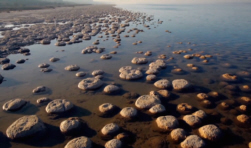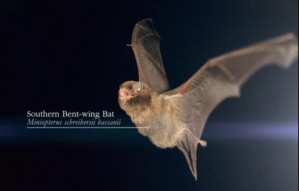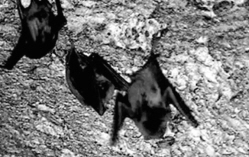Thrombolites
Lake Clifton, Perth
Size Matters?

Thrombolites
The smallest organisms on our planet are also our oldest and most abundant type of life forms. These weird, rocky blobs in the shallows of Lake Clifton,
just south of Perth, are made by bacteria. These mounds are called thrombolites, on account of their clotted structure, and they're built up over centuries
by colonies of microscopic bacterial cells.
Although these colonies are rare, by most definitions, bacteria are THE dominant form of life on our planet.
On every surface across every landscape, you find bacteria. In fact, numerically speaking, there are more bacteria living on and inside my body than
there are human cells. Bacteria come in many shapes and forms and are not actually animals or plants, instead sitting in their own unique taxonomic
kingdom. Compared to the cells we are made of, bacteria are structurally much simpler and far, far smaller.
Bacteria are typically around 2 microns in size. That's 2 millionths of a metre, which is very hard to picture but it means that you could fit
around half a million of them on the head of a pin or, to look at it another way, if I took a single bacterium and scaled it up to the size of this
coin, then I would be 25 km high.
Bacterial-type organisms were the first life on Earth and they've dominated our planet ever since. Excluding viruses, which by most definitions
are not alive, bacteria are the smallest free-living life forms we know of.
But what ultimately puts the limit on the smallest size of life?
Single-cell life needs to be big enough to accommodate all the molecular machinery of life and that size ultimately depends on the basic laws of
physics. It depends on the size of molecules which depends on the size of atoms which depends on fundamental properties of the universe like the
strength of the force of electromagnetism and the mass of an electron.
And when you do those calculations, you find out that the minimum size of a free-living organism should be around 200 nanometres which is around
200 billionths of a metre. And that should be universal, it shouldn't only apply to life on Earth but it should apply to any carbon-based life
anywhere in the universe because it depends on fundamental properties of the universe.
From the smallest bacterium to the largest tree, it's your size that determines how the laws of physics govern your life. Gravity imposes itself
on the large, and the electromagnetic force rules the world of the small. But the consequences of scale for life on Earth extended beyond dictating
the relationship you have with the world around you. Your size also influences how energy itself flows through your body.

Bent-Wing Bat
These are southern bent-wing bats, Miniopterus scbreibrsii bassanii… one of the rarest bat species in Australia. Every evening, they emerge in
their thousands from this cave, in order to feed. when fully grown, these bats are just 5.5 cm long, and weigh around 18 g. Because of their size,
they face a constant struggle to stay alive.
We're using a thermal camera here to look at the bats, and you can see that they appear as streaks across the sky. They appear as brightly
as me – that's because they're roughly the same temperature as me. They are known as endotherms – animals that maintain their body temperature.
And that takes a lot of effort. These bats have to eat something like three-quarters of their own body weight every night, and a lot of that
energy goes into maintaining their temperature.
As with all living things, the bats eat to provide energy to power their metabolism. Although like us, they have a high body temperature
when they are active, keeping warm is a considerable challenge, on account of their size.

Roosting Bats
The bats lose heat mostly through the surface of their bodies. But because of simple laws governing the relationship between the surface area
of a body and its volume, being small creates a problem.
So, let's look at our box again, but this time for surface area to volume. There is a big thing, it's made of 8 blocks so its volume is 8 units,
and its surface area is 2 buy 2 on one side so that's 4, multiplied by the 6 faces is 24. So, the surface area to volume ratio is 24 to 8,
which is 3:1.
Now, look at a small thing. This is one block, so its volume is one unit. Its surface area is one by one by one, 6 times, so it's 6. So, this
has a surface area to volume ratio of 6:1. So, as you go from big too small, you're surface area to volume ratio increases.
Small animals, like bats, have a huge surface area compared to their volume. As a result, they naturally lose heat at a very high rate. To
help offset the cost of losing so much energy in the form of heat, the bats are forced to maintain a high rate of metabolism. They believe the
rapidly, there is little heart races, and they have to eat a huge amount.
So, a bat's size clearly affects the speed at which it lives its life.


